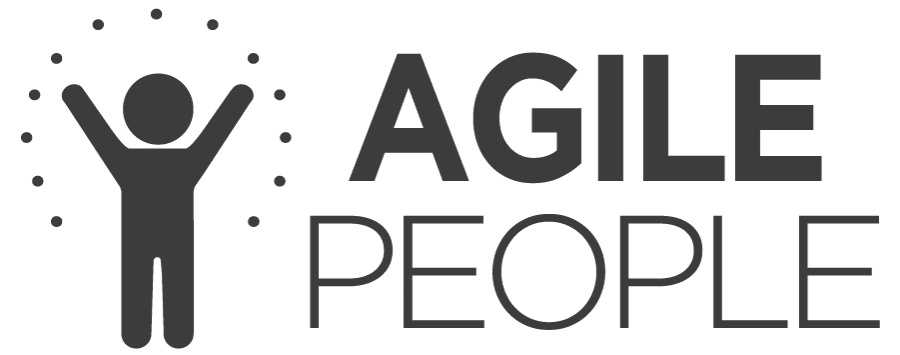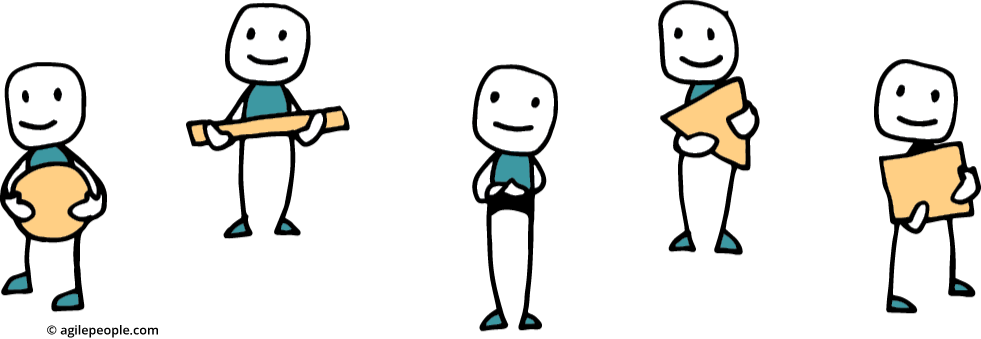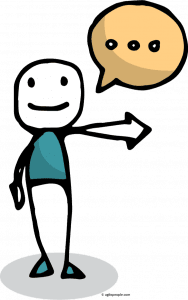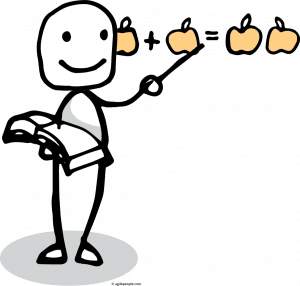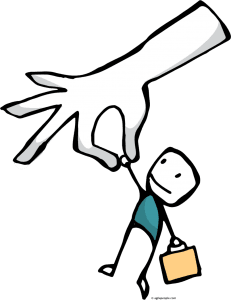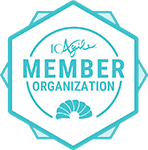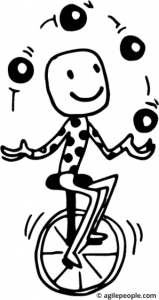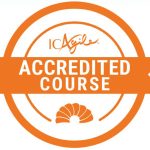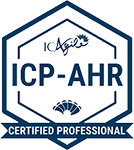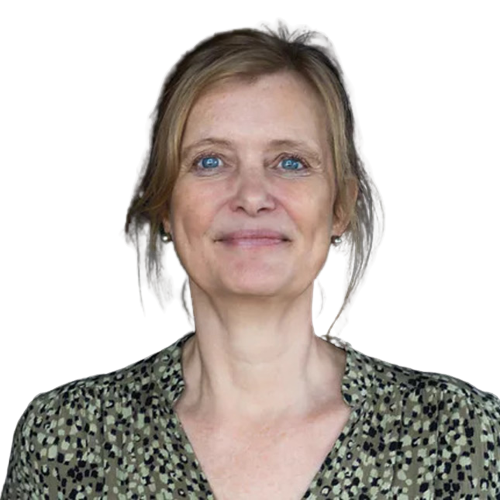
[Italian] Agile People Coach
Agile People Coach | 5 online sessions
Read an article about the Agile People Coach here
Feedback from participants in previous courses:
- I’m so happy that I found this course, it has inspired me to change my agenda for my career and business content. I want to spread the Agile mission!
- Fantastic!
- Great work, great instructor, and great team! I loved the whole journey
- Awesome course
- Great experience, really enjoyed it!
In the future of work, HR and Managers will need to take an Agile People Coaches’ role, with the necessary competence in basic human needs, behaviors, teamwork, and how to support an emerging strategy towards the organization’s purpose.
An Agile People Coach is working inside an organization as an employee or a consultant and wants to spread the principles and values to every corner of the company. You want to bounce ideas and get inspired by a community of like-minded people who have the same goal: increasing business agility and helping organizations on their learning journey/transformation by supporting HR and Leaders to attain an agile mindset.
The Agile People coach is an alternative career for traditional managers and HR professionals. An Agile People Coach is more than an Agile Coach, although the basic understanding of agile values, agile tools and methods, systems theory, and organizations are the same. The difference lies in the deeper People’s perspective. During this training, you will learn how to coach people to find a place where they can be the best they can be and create conditions for people to perform together.
During the Agile People Coach training, we cover 3 perspectives:

Knowing yourself and why you do what you do: The Reiss Motivation Profile (RMP) shows your basic needs and motives and contributes to a better understanding of yourself and your leadership.
Developing yourself and understanding biases, mind traps, and how to avoid judging
Communicating effectively using storytelling and visualization are powerful tools.
Coaching others to find their perfect place in the organization taking their personality, interests, and passions into account

How to increase the pace from immature to mature high-performing teams, using skills for communication, leading, coaching, and conflict resolution
How to grow and develop teams to be independent and empowered to make their own decisions, for example, about their contribution to the organization’s goals or their salaries

How to balance an agile culture with an agile structure, providing enough support for emerging strategies where all people are involved in setting the direction (via OKRs or other kinds of relative targets)
How to work to change behaviors – accomplishing an agile mindset and culture through removing limiting structures like annual budgets linked to fixed performance targets and individual bonuses
Create conditions for a Learning organization where it’s ok to make mistakes and learn from them, which requires a platform of Psychological Safety
Target Audiences
- Agile Coaches who want to understand how to help HR and Leaders to attain an agile mindset and support them in change initiatives
- Leaders or HR professionals at any level in an organization who aspire to lead an organization on a business agility journey
- Leaders who see the value of growing an agile organization and are committed to developing themselves as agile leaders to achieve that aim
- Anyone wishing to learn about the paradigm shifts necessary to lead in adaptive environments and to develop relevant leadership and HR capabilities to support the change
- HR-Consultants, Management Consultants, Change Managers, or Agile Coaches who want to use the Agile People course content and exercises as part of their product portfolio.
Agile People Coach / Trainer with Agile People

After the training, you can become a partner with Agile People and offer courses from your own company or as a consultant/employee in a larger organization. Contact Pia-Maria Thorén at [email protected] to find out more about this option.
Training Program
For this training, you will participate in 20 online 2-3 hour sessions over 2 months or the whole year. If you miss a session, you can take it back in the next course round.
C01 15/04 h 08:30 – 10:30 Agile Coaching and the Four Roles of a Coach
C02 17/04 h 08:30 – 10:30 The Agile People Coach – a new Role for HR and Managers
C03 19/04 h 08:30 – 10:30 Professional Coaching
C04 22/04 h 08:30 – 10:30 My Motivation Profile as a base for Self-leadership
C05 24/04 h 08:30 – 10:30 Conflict Coaching
Session C1-5 Deep dive into Agile People Coaching
Session C1: Agile Coaching and the Four Roles of a Coach
Mentoring, teaching, facilitating, and coaching are the stances of an Agile Coach – they need to master all of them to be successful and pick the right stance depending on the organization, situation, and people. But what is the difference between an Agile Coach and an Agile People Coach?
Session C2: The Agile People Coach – a new Role for HR and Managers
In this session, we examine the nine roles of the Agile People Coach and a self-assessment – how skilled are you in the different roles and where do you need to improve? What are the skills that you need to add as a regular Agile Coach, Leader, or HR person if you want to increase your agile & people skills and to be able to call yourself an Agile People Coach? We look at scenarios for practicing when to take what role.

To understand the Agile Coach and the Agile People Coach’s roles, you need to also have some knowledge in Professional Coaching and know how to formulate and ask suitable questions to guide and lead a person to understand what needs to be done in any situation.
Session C4: My Motivation Profile as a base for Self-leadership
Who you are and what makes you do what you do is very personal and different from others why. Communicating with people who are different from yourself and knowing how to understand what makes other people do what they do and how they are different/similar to you is crucial competence in agile environments. We develop My washing instructions and discuss how your needs affect your life and work.
Session C5: Conflict Coaching
Exploring conflict theory and finding the right balance between harmony and healthy conflict in a team or organization is key when moving towards high-performing teams. In this session, you learn different models for dealing with conflict, understanding conflict escalation and different types of conflicts, and handling conflict in a team.
Agile People – a global community

After the training, you can subscribe to the training material and the exercises you can use in your own organization or with your clients. Maybe you work today in an HR role or have been a leader for a shorter or longer period. Or maybe you are an agile coach who feels ready for deeper challenges and understanding regarding people and how HR and leaders need to change so that you can support them in their future roles.
FAQ
Do I need any pre-competence?
You don’t need any pre-competence to attend the online course. We are tailoring the course for the participants and your level. As a bonus, you will learn how to use modern digital tools, like digital Canvases, Video meeting platforms, Kanban boards, etc.
How does the process look for this training?
We will use virtual online tools to communicate, learn and interact. You will need a good internet connection and an undisturbed workplace where you can have a quiet background. We will work in break-out sessions in Zoom and use our community platform for communication between the instructor-led sessions. We will go through all practicalities during the first session.
Are the sessions scheduled on specific days at specific times?
Yes, the sessions take place according to a schedule for the year that has been predetermined. If you miss a session, you can always take it back at a later session.
After training completion, what is the process to become ICAgile Certified?
The certification process requires finalizing the certification assignment and answering several questions after each session. When the assignment is finalized (approved with feedback from us), you can buy your ICAgile certificate in our shop. We will make your certificate download available from ICAgile via a link. The Agile People Certificates are included in the training price after finalizing the course, and there are separate certificates for the modules Foundation, HR, Leadership, and Coach.
Course Leader
Your course leader and facilitator is Emanuele Moscato.
He’s a Consultant and an Agile Change Agent and the founder of VARIACTION change consulting & grounding
Online Delivery

We are working with Zoom for interactive discussions and team exercises, Mural as the digital canvas, and our community platform for communication between the sessions. In addition, you will get access to a Learning Management System (on agilepeople.com) that contains an overview and detailed information about videos, articles, documents, and case stories for all sessions, including links to all of the tools used in training. You will also get access to Pia-Maria’s three books in digital format.

She is the author of the books” Agile People – A Radical Approach for HR and Managers (That Leads to Motivated Employees),” the “Agile People Picturebook,” and Agile People Principles – Your Call to Action for the Future of Work. All three books are included in digital format in this course.
There will be some work after every session, so add about 3 hours more every week. We will distribute course literature and material digitally. You will accomplish the certification assignment between the sessions to be ready on the last session’s day.
Events Cancellation Policy
If you should have to cancel your registration, a notification in writing should be sent to [email protected]. Please make sure you state the name of the conference/event in the subject line of your email.
- We will refund 85% for cancellations received 60 days before the start of the event.
- We will refund 50% for cancellations received 59 days and 31 days before the event starts.
- We will refund 25% for cancellations received 30 days and 14 days before the event’s start.
- We will issue no refund for cancellations received within 14 days of the event.
- You are allowed to send a colleague
Trainer
-
 Emanuele Moscato
Emanuele MoscatoI spent several years working in large companies in different areas (business development, marketing, sourcing, organization, digital innovation) measuring myself in different fields, from software simulation and validation, to strategic sourcing and finally to organizational methodologies. In these experiences I was able to put into practice what I learned in my studies and learn new things using my ability to see and my propensity to think out of the box. Now is the time to help companies improve themselves by providing them with an external, competent and sometimes visionary, point of view. That’s why I decided to take care of companies, and even before the people who make them live, from outside as a consultant. Specialties: Agile, Lean Six Sigma, Innovation, Change Management, Counseling and life coaching.

